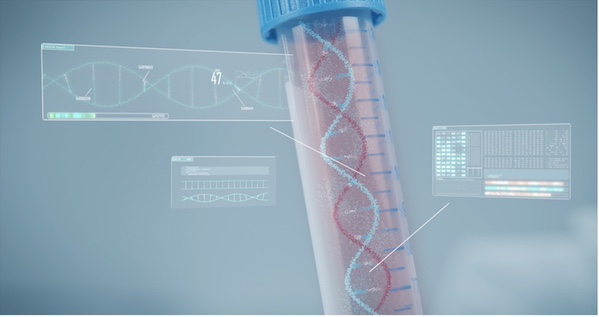Simple Blood Test Measures Repetitive DNA for Early Cancer Detection
March 7, 2024
Source: drugdu
 470
470
 Cancer patients can have varying levels of a specific kind of repetitive DNA known as Alu elements in comparison to those without cancer. Despite constituting about 11% of the DNA in humans and other primates, Alu elements have traditionally been considered too complex to be effectively utilized as biomarkers due to their small, repetitive nature. Now, advancements in machine learning can allow for the measurement of these elements through a simple blood draw.
Cancer patients can have varying levels of a specific kind of repetitive DNA known as Alu elements in comparison to those without cancer. Despite constituting about 11% of the DNA in humans and other primates, Alu elements have traditionally been considered too complex to be effectively utilized as biomarkers due to their small, repetitive nature. Now, advancements in machine learning can allow for the measurement of these elements through a simple blood draw.
Researchers at Johns Hopkins Medicine (Baltimore, MD, USA) leveraged this insight to improve a test designed for early cancer detection. They began their study with a sample size that was ten times larger than what is usually seen in such research. Alu elements are relatively small, each being about 300 base pairs in length within the vast 2 billion-step DNA ladder. Yet, changes in the proportion of Alu elements in blood plasma are consistent, irrespective of the cancer’s origin. The research team had previously developed a test for detecting aneuploidy, a condition involving chromosome copy number alterations common in cancers, using a liquid biopsy blood test. This test identifies fragments of cancer cell DNA circulating in the bloodstream. While conducting this research, they noticed an unusual signal that differentiated between cancer and non-cancer, which wasn’t attributed to changes in chromosome numbers. Consequently, they combined their original test, which analyzed 350,000 repetitive DNA locations, with an unbiased machine learning approach.
In their study, the team analyzed samples from 3,105 individuals with solid tumors and 2,073 without cancer, covering 11 types of cancer and evaluating 7,615 blood samples. The repetitive DNA sequences were examined repeatedly to assess the accuracy of the model. They achieved a specificity rate of 98.9%, crucial for minimizing false positives, especially when screening asymptomatic individuals to avoid erroneous cancer diagnoses. In an independent validation set, incorporating Alu elements into the machine learning model identified 41% of cancer cases that were missed by eight existing biomarkers and the team’s earlier test. The most significant contributor to cancer detection was identified as AluS, the largest subfamily of Alu elements. People with cancer were found to have lower levels of AluS in their blood plasma than typical. The researchers expect their Alu-based cancer detection method to complement the array of existing cancer diagnostic tools. Their next step involves identifying the most promising biomarkers and combining them for enhanced efficacy.
Source:
https://www.labmedica.com/molecular-diagnostics/articles/294800465/simple-blood-test-measures-repetitive-dna-for-early-cancer-detection.html
Read more on
- Breaking the Mold and Forging a New Path! From Insulin Technology Pioneer to Global Innovation Competitor December 4, 2025
- A subsidiary of Kingfriend Pharmaceutical Co., Ltd. has received FDA approval for its self-developed injectable dapavancin December 4, 2025
- Major ophthalmic new drug successfully completed Phase III trials December 4, 2025
- Simcere Pharmaceutical and Wangshan Wangshui have reached an exclusive licensing agreement for deuterium remidevir hydrobromide for new indications such as RSV infection December 4, 2025
- SAL0140 tablets approved for clinical trials for the treatment of chronic kidney disease December 4, 2025
your submission has already been received.
OK
Subscribe
Please enter a valid Email address!
Submit
The most relevant industry news & insight will be sent to you every two weeks.



